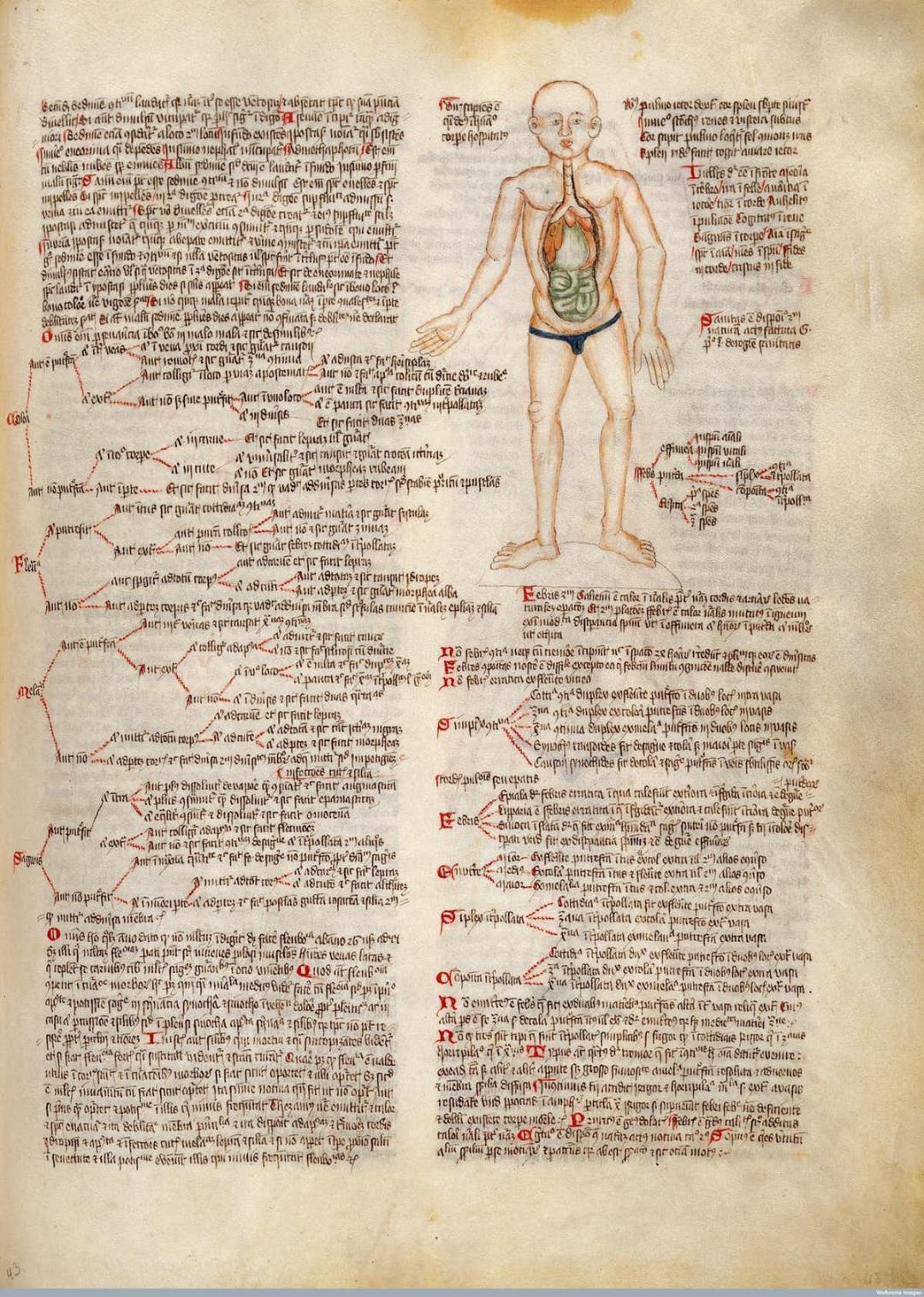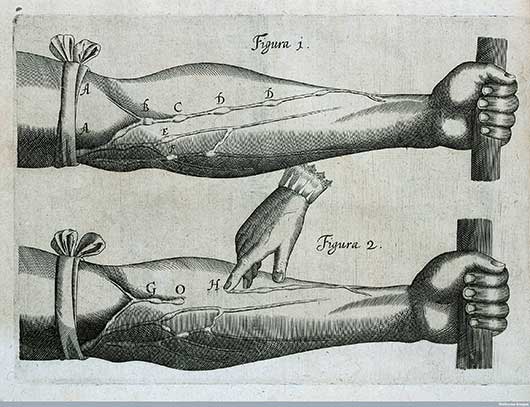This topic takes on average 55 minutes to read.
There are a number of interactive features in this resource:
 History
History
 Biology
Biology
The Renaissance was a period in European history during which there was a revival in the ideas of ancient Rome and Greece. Culture, art, science and medicine were studied by aristocrats and scholars who prized themselves on their education. Ideas flourished and the newly invented printing press allowed books to be produced quickly. Before this, books were slowly and painstakingly copied by hand. Although very few people could read and write, the printing press was a revolution in information technology and resulted in ideas spreading around Europe like never before. It is hard to believe its impact but the printing press was the information superhighway of its day.
Medicine remained dominated by the teachings of the church but physicians began to learn more about the human body. They read books translated from Arabic medical texts and began to study anatomy in a scientific and systematic way. Andreas Vesalius and Leonardo Da Vinci dissected human bodies and made the first anatomical drawings. These helped in understanding the organs and systems of the human body. The church did not permit the dissection of 'God fearing bodies' so it was often the bodies of criminals or 'sinners' that were used. Doctors learned about anatomy from watching these dissections. Sometimes the criminal was alive at the start of proceedings as part of their punishment.
|
Drawing of muscles on a man |
Leonardo da Vinci made detailed drawings from |
Studies of abdominal blood vessels |
During the Renaissance, the human body was regarded as a creation of God and the ancient Greek view of the four humours prevailed. Sickness was due to an imbalance in these humours and treatments, such as bleeding the patient or inducing vomiting, were aimed at restoring the balance of these four humours.

15th century document providing information on the four humours

William Harvey observed how blood flowed around the body. Drawings like this demonstrate that veins have valves and return blood to the heart.
In 1628, William Harvey published his new theory that the heart acts as a muscular pump which circulates blood around the body in the blood vessels. Discoveries during the Renaissance laid the foundations for a change in thinking leading to the view that the body is made up of specialised systems that work together; the basis of medical knowledge that we still see today.
William Harvey noticed that blood flowing in veins travelled only in one direction; back towards the heart. He concluded that they must have valves to prevent the back flow of blood.
In 1661 the Italian scientist Marcello Malpighi identified capillaries which finally showed the link between arteries and veins and proving Harvey's theory for the circulation of blood.
Harvey made observations like these and concluded that veins are the blood vessels responsible for returning blood to the heart. He was the first person to suggest the circulation of blood as we know it today.
|
|
|
As the understanding of the body increased, so did the development of new medicines. Building on knowledge of herbs and minerals taken from Arabic writings, Renaissance pharmacists (or apothecaries) experimented with new plants brought from distant lands by explorers like Christopher Columbus.
The bark of the quina (cinchona) tree contained an ingredient called quinine which is still used in the treatment of malaria. The leaves of the tobacco plant were thought to have medicinal properties, although we now know it is responsible for an enormous number of deaths. Laudanum, an opium-based painkiller, was prescribed for many disorders and remained in use up until Victorian times. However, progress was slow and many medicines remained little more than superstitious potions containing ingredients like worm's livers and tongue of newt.
As new continents were explored, and trade between different parts of the world increased, it allowed the global spread of disease. This often had devastating effects as whole populations were exposed to pathogens against which they had no natural immunity. Bubonic plague moved along trade routes from China and killed more than a third of Europe's population. When the Spanish colonised South America, they brought smallpox, which killed many native Aztecs and Incas.
Diseases can spread rapidly when a pathogen enters a new population that has never been exposed to it. This is because none of the population has any natural immunity to the disease.
The majority of people were too poor to be treated by trained doctors. Major cities had hospitals. For example, the Santa Maria Nuova in Florence, treated wealthy patients. These hospitals were amongst the first medical schools in Europe to start teaching medicine. Surgery improved and techniques such as tying wounds to stop bleeding began to be used. Previously, bleeding was stopped by cauterizing, or burning, the wound with red hot metal.
Surgical instruments remained basic. A surgeon would perform operations with the most basic set of instruments: a drill, a saw, forceps and pliers for removing teeth. If a trained surgeon was not available, it was usually the local barber who performed operations and removed teeth.